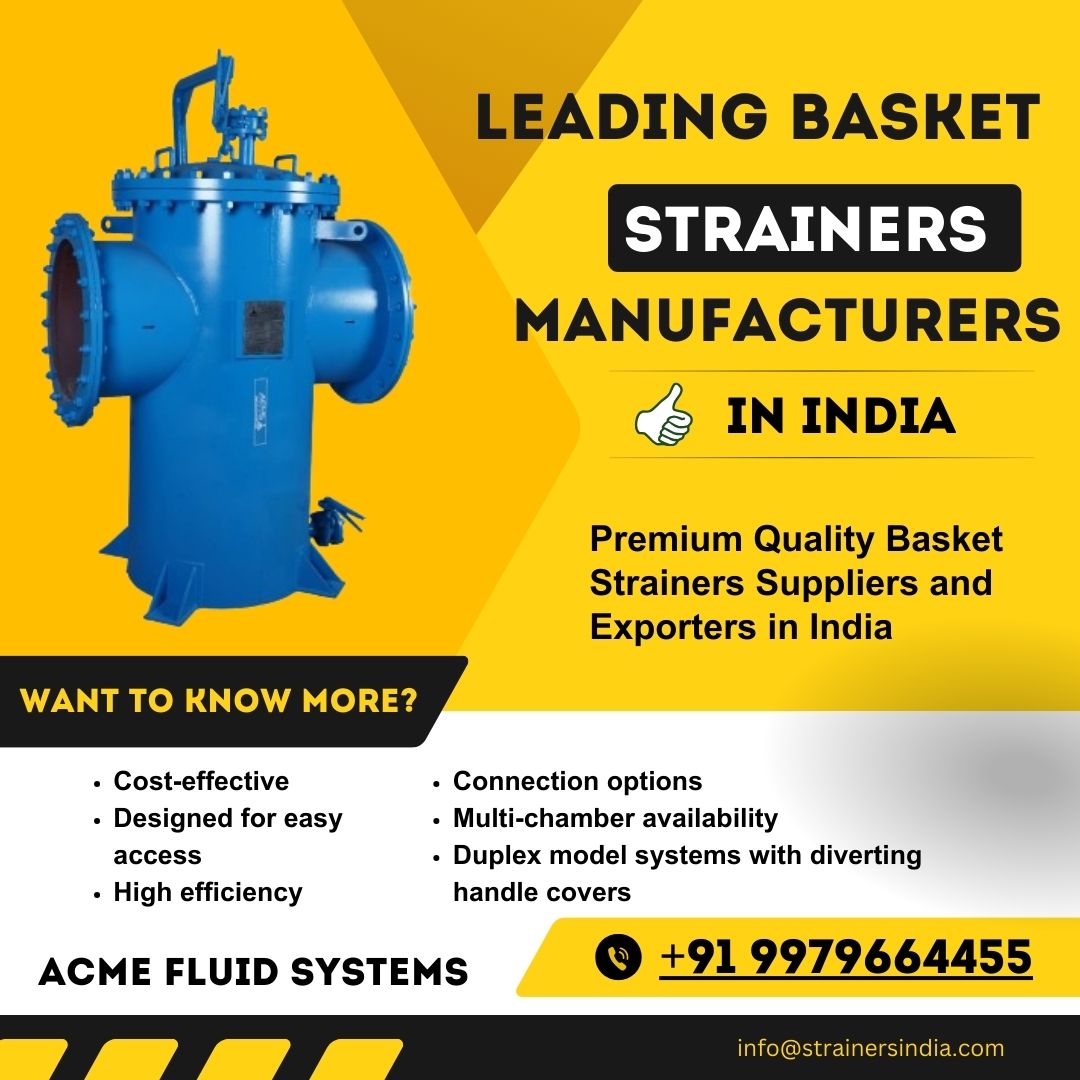Basket strainers are essential components in piping systems designed to mechanically remove solids from flowing liquids or gases by means of a perforated or mesh straining element. Unlike other filtration methods, basket strainers are ideal for applications requiring a robust, reusable solution to protect downstream equipment such as pumps, valves, and meters.
Types of Basket Strainers
Simplex Basket Strainers
Simplex basket strainers consist of a single basket chamber and are best suited for batch operations or systems that can be temporarily shut down for maintenance.
Duplex Basket Strainers
Duplex basket strainers feature two basket chambers with a diverter valve, allowing one basket to remain operational while the other is cleaned, ensuring uninterrupted flow.
Y-Strainers vs. Basket Strainers
Although both are used for straining, Y type strainers are typically used in high-pressure applications with low flow volumes. Basket strainers, on the other hand, are optimal for systems with higher flow rates and lower pressure drops.
Key Materials Used in Basket Strainer Construction
| Material | Application Use Case | Temperature Tolerance | Corrosion Resistance |
| Carbon Steel | General industrial use | Up to 800°F (427°C) | Moderate |
| Stainless Steel | Food-grade, pharmaceutical, and corrosive environments | Up to 1500°F (815°C) | High |
| Bronze | Marine and HVAC systems | Up to 450°F (232°C) | High (in seawater) |
| PVC | Chemical processing with non-corrosive fluids | Up to 140°F (60°C) | High (non-metallic) |
Applications of Basket Strainers in Industry
Chemical and Petrochemical
Strainers protect delicate process equipment from catalyst or particulate fouling in aggressive fluid systems.
Water Treatment
Used in raw water intake lines and pre-filtration stages to enhance system efficiency and lifespan.
HVAC Systems
Installed to protect heat exchangers, pumps, and cooling towers from clogging and debris-induced wear.
Oil and Gas
Essential in offshore and onshore operations where particulate contamination must be rigorously controlled.
Choosing the Right Basket Strainer
Flow Rate and Pressure Drop
Select a strainer sized appropriately for your system’s flow rate to minimize pressure drop and prevent operational inefficiencies.
Mesh Size
Mesh size dictates the level of filtration. Fine meshes capture smaller particles but may clog faster, requiring more maintenance.
Connection Type
Choose between flanged, threaded, or welded connections based on system specifications and ease of installation.
Maintenance and Cleaning Procedures
- Regular Inspection: Check baskets periodically to ensure efficient operation.
- Manual Cleaning: Remove baskets and clean with water jets or compressed air.
- Automated Backflushing: In critical applications, use automatic systems to flush out debris without dismantling.
Common Basket Strainer Problems and Solutions
| Problem | Cause | Solution |
| Frequent Clogging | Undersized mesh or high debris | Use a coarser basket or pre-filter |
| Corrosion | Incorrect material selection | Switch to corrosion-resistant alloy |
| Pressure Drop Increase | Dirty or blocked basket | Implement regular cleaning schedule |
| Gasket Leaks | Worn seals or improper torque | Replace gaskets and check fittings |
Advantages of Using Basket Strainers
- High dirt-holding capacity
- Reusability of baskets reduces operational costs
- Customizable in material, size, and pressure rating
- Easy integration with existing pipeline systems
Regulatory Compliance and Standards
Basket strainers are manufactured in accordance with ASME, ANSI, and API standards to ensure durability, pressure integrity, and operational safety in industrial environments.
Conclusion: Optimize System Protection with the Right Basket Strainer
Integrating the right basket strainer into your system ensures maximum efficiency, reduced maintenance costs, and prolonged equipment life. With options available for virtually every industry and application, selecting a high-quality, well-suited basket strainer is a critical step in industrial process management.
